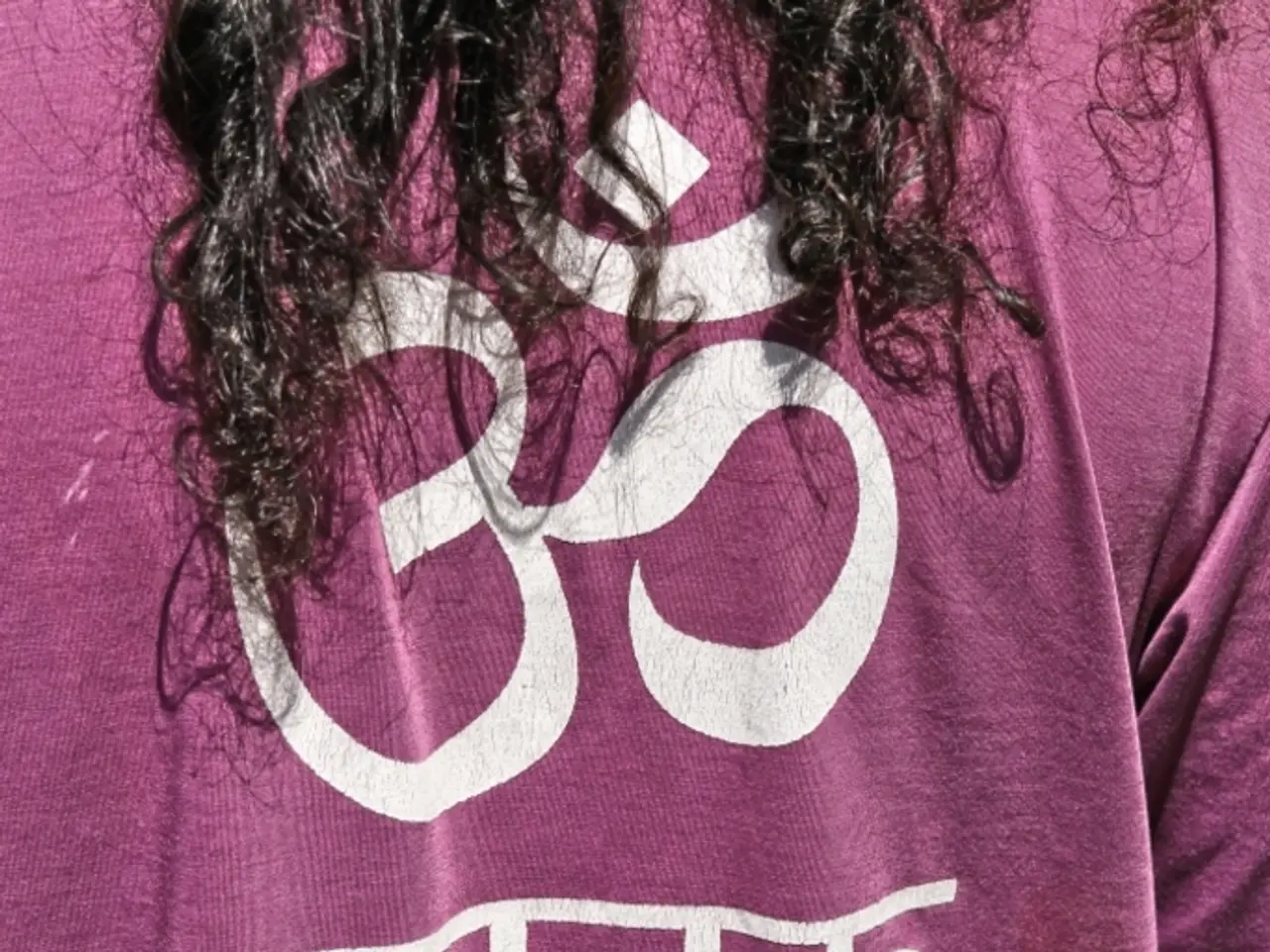Practicing Yoga's Inversion Move, the Downward Dog, for a rejuvenating break
The Downward-Facing Dog, or Adho Mukha Svanasana in Sanskrit, is a foundational yoga pose that offers numerous benefits for both physical and mental well-being. This inverted V-shape pose, resembling a straight line running from the top of the head, through the spine, and out towards the ceiling, is a staple in many yoga practices and is particularly useful for stretching the entire back of the body.
Getting Started
Before diving into the Downward-Facing Dog, it's essential to ensure that you are in good health to perform this pose. If you have high blood pressure, glaucoma, heart issues, dizziness, or fainting spells, it is recommended to consult with a yoga instructor, athletic trainer, or healthcare provider before attempting the pose.
To begin, start on all fours with your hands shoulder-width apart and knees directly in line with your hips. Spread your fingers wide, press down into your hands, tuck your toes, and lift your hips up and back, aiming to drop your heels towards the floor. Engage your core muscles, straighten your back, and keep your legs as straight as possible.
Modifications and Deepening the Stretch
For those who may find the pose challenging, there are several modifications available. To modify the pose for a more relaxed stretch, bend your knees a little and readjust your posture as needed. If you experience wrist stress in the standard pose, consider using a rolled towel or yoga mat edge under the heels of your hands for added support.
To deepen the stretch, you can lift one leg towards the ceiling, bend the outstretched leg back, and hold the pose for as long as comfortable before repeating with the other leg. This variation will engage your hips and hamstrings more deeply.
The Wall Variation
For those who may find it difficult to balance in the standard Downward-Facing Dog, a wall variation can be a helpful modification. Face the wall, place your hands flat with your fingers stretched, walk your legs back, hinge at your hips, and hold the pose for 10-15 seconds.
Benefits of the Downward-Facing Dog
The Downward-Facing Dog pose offers numerous benefits, including strengthening and working the shoulders, triceps, biceps, abs, hamstrings, glutes, quads, hip flexors, and knee joints. Additionally, the pose improves flexibility and control, provides active rest, and increases blood flow to the head and upper body.
Downward dog is often used as a transition between movements, such as sun salutations, making it a versatile pose that can be integrated into various yoga practices.
In conclusion, the Downward-Facing Dog is a foundational yoga pose with numerous physical and mental benefits. By following the guidelines and modifications provided, you can safely and effectively incorporate this pose into your yoga practice. As always, it's essential to listen to your body and adjust the pose as needed to maintain comfort and avoid injury.








